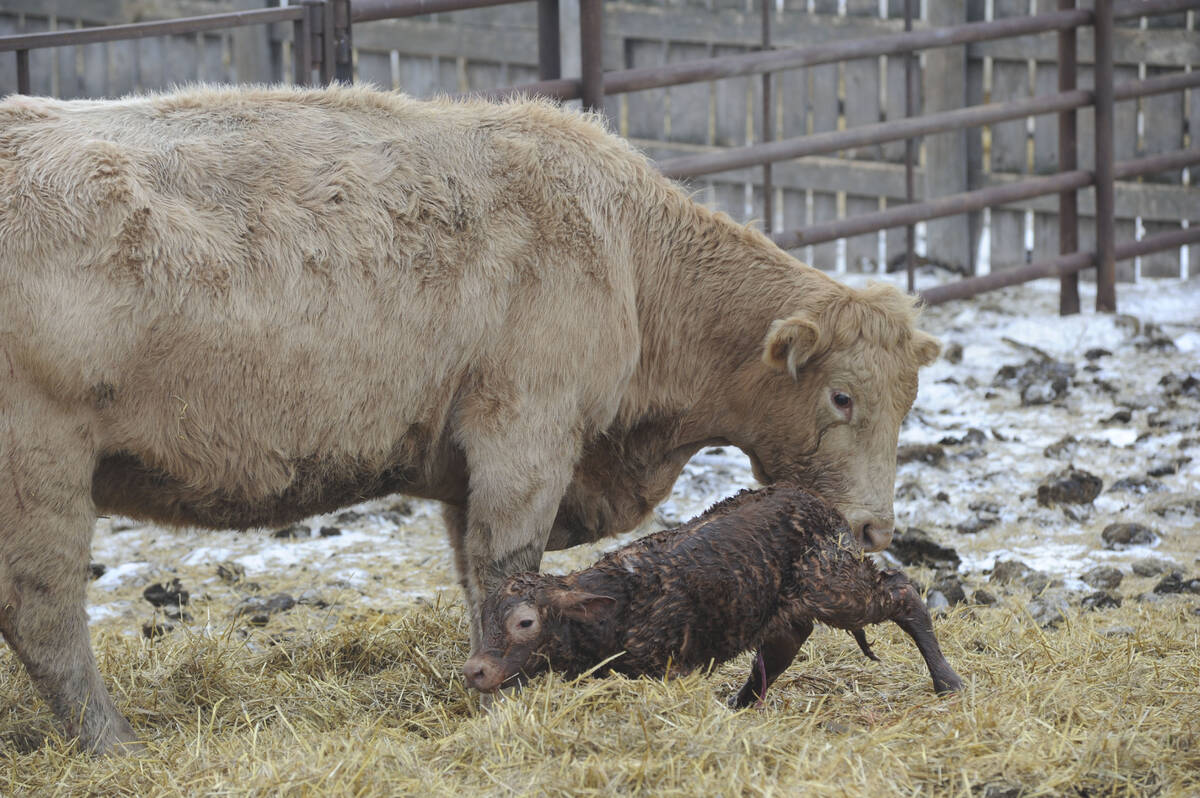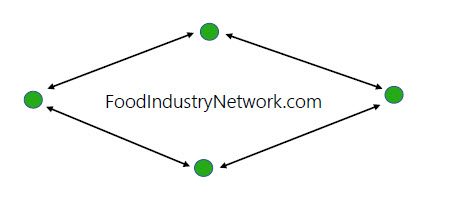Chop forages for profitable winter feeding

The equipment used for winter feeding can impact cow performance and profitability, according to research from the University of Guelph.
A study led by graduate student Madeline McLennan found that gestating beef females fed a chopped wheat straw ration had greater dry matter intake than females fed the same ration with a bale processor, leading to better body condition maintenance over winter.
“Overall, we think that the chopping of forages, rather than the processing of low-quality forage, could help to improve palatability, intake and overall animal performance,” McLennan stated during a presentation of her research at the 2025 Virtual Beef Symposium.
Read Also


Cattle producers can manage difficult labours with tested strategies
Manitoba cattle producers can manage difficult calving situations by following some tested strategies.
Bale processors, which unroll bales and deposit them into a windrow or bunk, can reduce feed competition and feed waste while improving palatability. Bale choppers do all this while also chopping the forage into smaller, more consistent particles.
McLennan wanted to study whether using a bale chopper was a better choice for winter feeding in terms of nutrition, feed intake and animal performance, something that has been studied in dairy females but not extensively in the cow-calf sector.
As well, she wanted to explore whether increasing the neutral detergent fibre digestibility of the forage through chopping would reduce enteric methane emissions in the cows studied.
The study included 82 Angus females fed a trial diet for about 90 days ahead of calving, split into two treatment groups. The total mixed ration diets consisted of 33 per cent wheat straw, 64 per cent mixed haylage and 3 per cent of a vitamin and mineral supplement.
The only difference was that one group was fed with a bale processor, while the second group was fed with a bale chopper.
Throughout the feed trial, animals were weighed, scored on body condition and given ultrasounds to measure rib and rump fat. The researchers also monitored feed intake and sorting behaviour, and a free-choice feeding chamber was used to measure methane and carbon dioxide emissions.
Greater palatability and feed intake
One of the most noteworthy findings of the study was the impact on body condition score.
“The animals that were fed the chopped straw ration … were actually able to maintain their body condition score or gain body condition score, while that processed straw group actually lost some of their condition over the trial period,” said McLennan.
This was also seen in the rib fat deposition measurements, as the chopped straw group gained and maintained rib fat while the processed group tended to lose it.
“We think this can be attributed to the result that the chopped straw group was actually consuming more of their ration than the processed straw group, meaning that this might have been a little bit more palatable for them to consume.”
Findings on feed sorting behaviour also suggested the chopped ration was more palatable.
Weight gains and average daily gains were slightly higher in the cows fed chopped straw, but McLennan said these differences were not significant.
As well, the study found no significant differences in methane emissions between the two groups and no differences in grams of methane per kilograms of dry matter intake.
Impact on profitability
The study also considered the economics of these winter-feeding methods. McLennan’s analysis found that the additional time spent chopping feed for the females in the study cost around $171.60.
She ran this figure and the findings on body condition score through the Beef Cattle Research Council’s online calculator to show how body condition score impacts cow productivity and profitability.
According to the calculator, a body condition score reduction from three to 2.5 can result in pregnancy rate decreasing by three per cent, postpartum interval increasing by five days, abortion rate increasing by 0.9 per cent, risk of stillbirth increasing by 1.3 per cent and risk of calf death loss increasing by 0.2 per cent.
Using this information, McLennan found that if the females in the study maintained a body condition score of three and their weaned calves sold for $4.80 per pound, they would bring a potential profit of more than $7,000 than if they had a body condition score of two.
“The maintenance of body condition over the gestation period up until calving is a key management strategy to improve production as a loss in condition over this period can lead to calving and reproductive challenges within the herd,” McLennan explained to the Western Producer.
“I would say that if producers are able to utilize a bale processor or chopper when feeding lower-quality forages in winter rations it could help to improve the animal’s ability to utilize that forage for energy and in turn potentially improve overall herd performance and productivity.”
Source: producer.com


